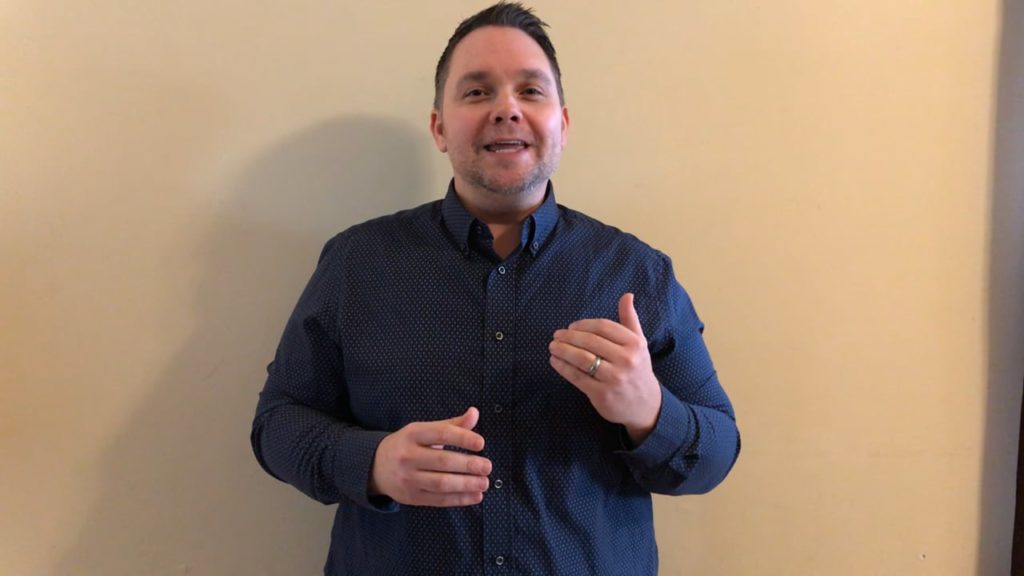Learn more: Take the New Churches Bivocational Ministry course.
Church planting has been on the rise in recent years. And one of the most significant trends is that of bivocational leaders starting these new churches.
Historically, the phrase “bivocational pastor” has been used to refer to a leader who served a church that was unable to compensate a pastor with a full-time salary. Therefore, the pastor would work a second or third job to supplement what the church could provide. In many cases, this was out of necessity rather than preference.
Often the language of “tentmaker” (the Apostle Paul’s trade described in Acts 18) has been used to define this type of church planter. However, today there is a new movement among bivocational leaders.
More church planters are choosing to plant bivocationally. They are making this decision out of the conviction that bivocational church planting actually provides a more desirable way to plant a new church, rather than on the basis of limited funds.
While there is certainly a place for both bivocational church planting and fully-funded approaches, there are three significant benefits to planting as a bivocational leader.
1. MISSIONAL ENGAGEMENT
Planting as a bivocational leader has significant benefits in that the planter has more opportunities to connect relationally with people in the community. Employment outside the church gives them access to a mission field that is not readily available to a pastor who is employed full time by a local church.
Many traditional pastors find themselves working inside a church bubble, spending most of their time talking with church people about things of the church. Even when a fully-funded pastor makes the effort to engage people in his community, he often finds it challenging to fully relate. Until a person actually incarnates into the local context, he can’t begin to understand the values and interests of the people.
It is difficult to really love and serve the people God has sent us to from a distance. Some people have referred to this as “marketplace mission” because most of the relationships developed are the result of the planter’s vocational connections. His marketplace job isn’t a hindrance to what God is doing; it’s actually an advantage to engaging in God’s mission. Unfortunately, too many Christians don’t view vocation in this manner.
To illustrate why we need to rethink vocation, let me ask you a question. Think about what you did yesterday. Now answer this question: What percentage of what you did yesterday was spiritual, and what percentage was secular? Let me ask you a follow-up question. Does selling insurance, running a coffee shop, driving for Uber, teaching at a public school or waiting tables at the local restaurant matter to God?
The point is this: rethinking vocation must start with considering this sacred-secular divide, or what some people refer to as the problem of dualism (wrongly dividing something that should not be divided like the sacred (spiritual) and the secular (material)).
For example, the words “full-time Christian work” or “full-time ministry” are commonly used to describe those whose vocational calling is to be a pastor, missionary or parachurch worker. However, biblical understanding is that all Christians are called to full-time ministry, doing good work well for the glory of God, regardless of their specific vocation. If God reigns over all things (and He does), then all things are sacred.
Planting a church as a bivocational leader helps to diminish this sacred-secular divide. A congregation sees the church planter model the fact that all vocations are sacred. Regardless of what God has called a person to do, it is a sacred calling. As a result, the benefits of being in the marketplace are multiplied exponentially as every member recognizes how their vocation fits into God’s mission.
Further, the sacred-secular divide forces us to reframe how we think about bivocational ministry. In fact, just the term “bivocational” invokes the thought of two separate, distinct vocations.
To help overcome this disconnection, I will often use the term “covocation”. It embodies the reality that if a person is called to be a dentist, a teacher or a plumber, and at the same time is called to start a church, the different callings are not isolated from one another, instead they are actually interlinked and equal.
In a post-Christian context, where people are skeptical of the church, it is important for non-Christians to see that church leaders have jobs like everyone else. This can provide significant “street-cred” with those outside the church.
It is important to understand that this new breed of covo planting is missiologically driven. Planters need to see themselves more as church planting missionaries, than as pastors starting worship services. In other words, planting the church begins by engaging in missionary behaviors. The planter must allow their missiology to inform their ecclesiology, not the other way around. By living like a missionary in a local context, new communities of faith are birthed out of missional engagement.
2. FINANCIAL STABILITY
A second major benefit of covocational church planting relates to the financial stability it provides:
- THE CHURCH PLANTER: When the primary financial support comes from a marketplace source rather than the church plant, there is usually less financial strain on a family. This is especially true when the planter is employed full time in a vocation that provides benefits like insurance, vacation and retirement.
- THE NEW CHURCH: A church led by covocational leaders usually has a strong financial base. Without the need to provide full-time salaries and benefits, the church can put more of its financial resources into mission and ministry.
- THE CHURCH PLANTING ENTITY: Many denominations have made the commitment to plant hundreds, if not thousands of churches over the next several years. However, there simply aren’t enough finances to plant the needed churches with the current funding model.
Covocational planting provides the opportunity for funding entities to embrace more sustainable church planting practices. This is especially necessary for planters who are engaging socioeconomically diverse contexts that are made up of the very poor or immigrant populations.
Many traditional church plants start with a large annual budget supported by multiple funding streams, including partnering churches and denominational entities. Because most funding models are structured over a three-to-five-year period, the church planter feels pressure to grow the church quickly, so it can become self-sustaining before funding runs out.
The unfortunate reality is that a planter is often forced to attract financial givers rather than engaging the brokenness in their community. Covocational church planting, on the other hand, provides a more viable financial model that allows the planter to maintain a clear focus on mission.
3. SHARED LEADERSHIP
Covocational church planting creates opportunities for leaders in the congregation to use their God-given talents to create a culture of participation rather than one of spectatorship.
More church members, out of necessity, become involved in the mission of the church. Covocational leadership helps to diminish the laity-clergy divide. If pastoral leadership is reserved only for the “professionals” then many gifted leaders will miss opportunities to pursue what God has called them to.
It is important to understand that bivo and covo church planting is not simply about having two or more jobs; it is really about aligning one life. It’s about blending our calling to support our families and ourselves with our calling to live a life engaged in God’s mission.
We are called to be a missionary people sent into the world to participate in God’s redemptive purposes. Planting new communities as bivocational or covocational kingdom leaders is one vital and urgent means to accomplish that task.
Editor’s note: This is an excerpt from Covocational Church Planting by Brad Brisco.
Learn more: Take the New Churches Bivocational Ministry course.
Published January 11, 2022

